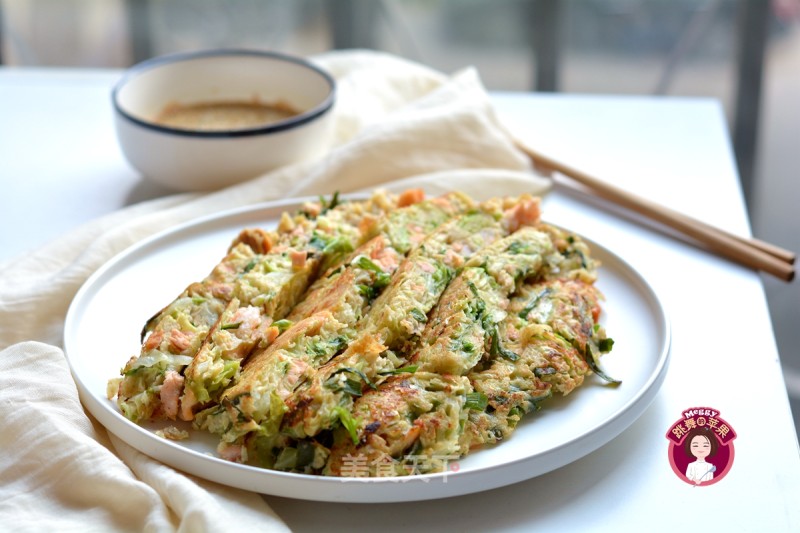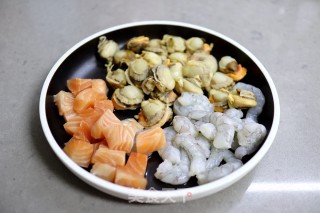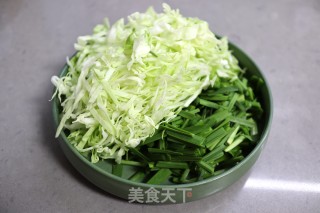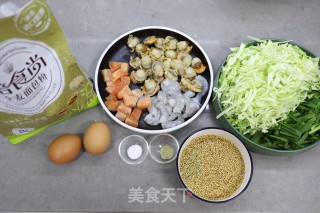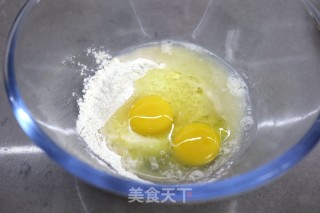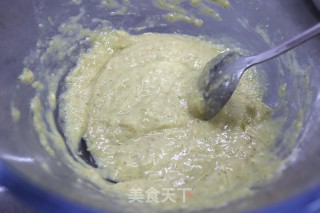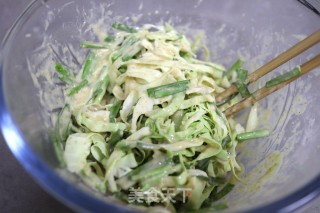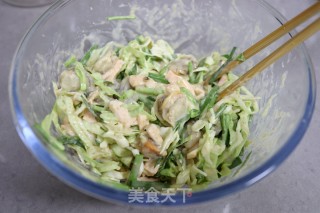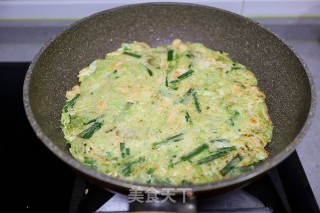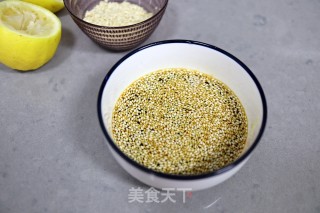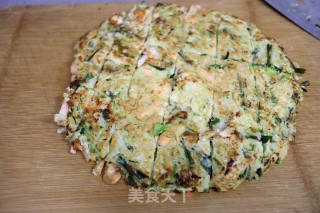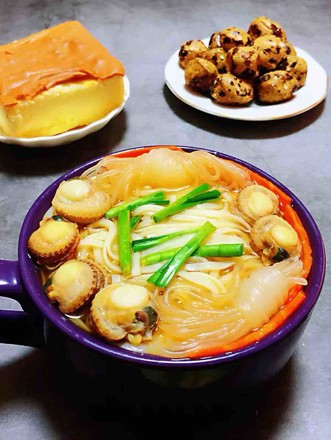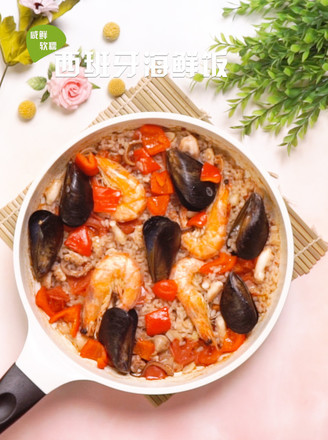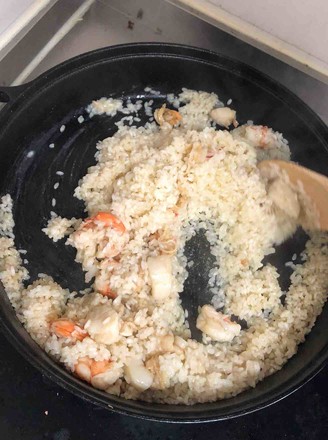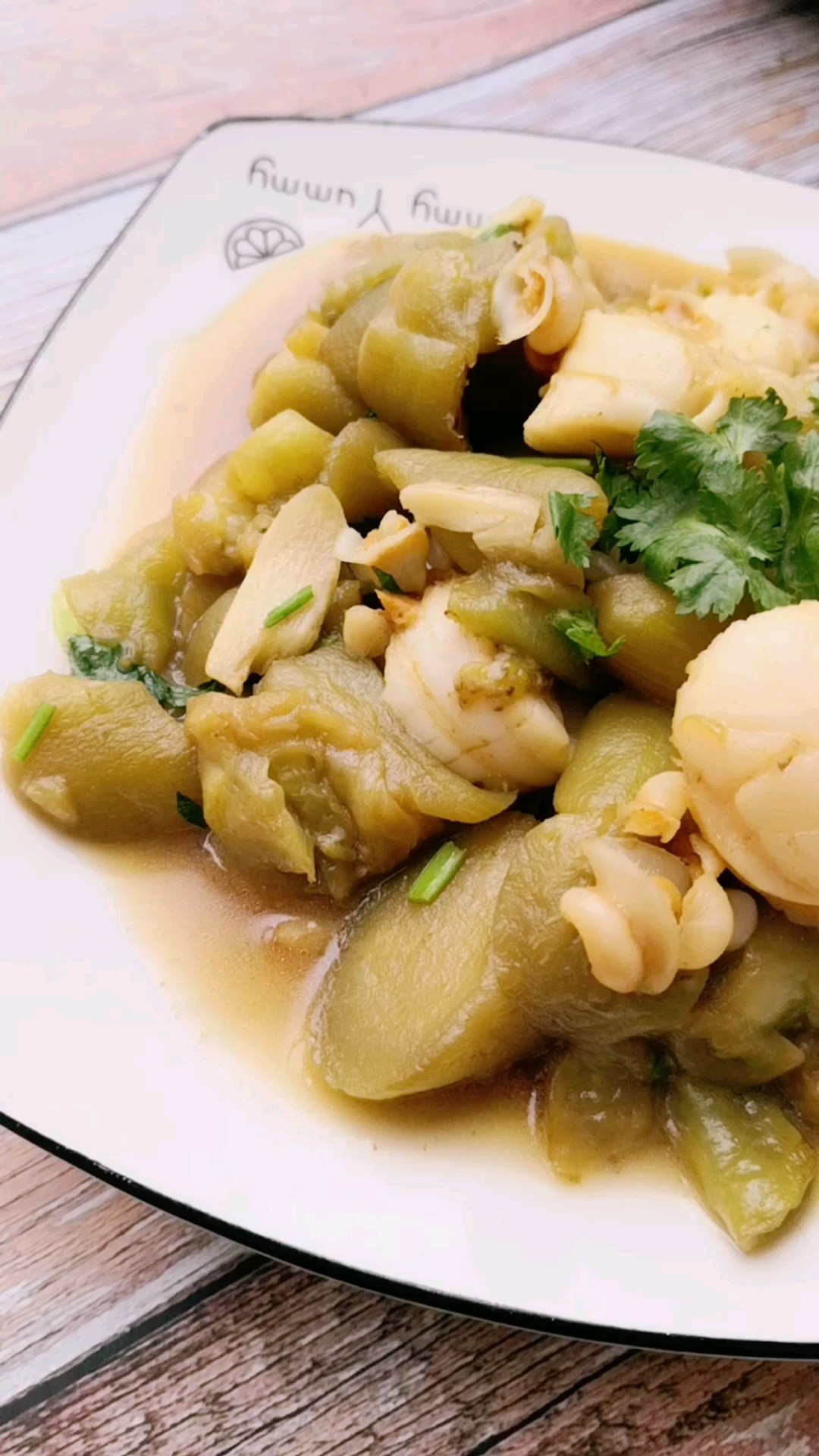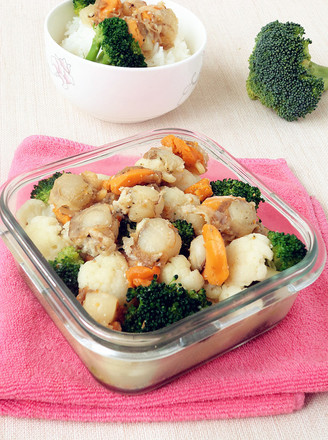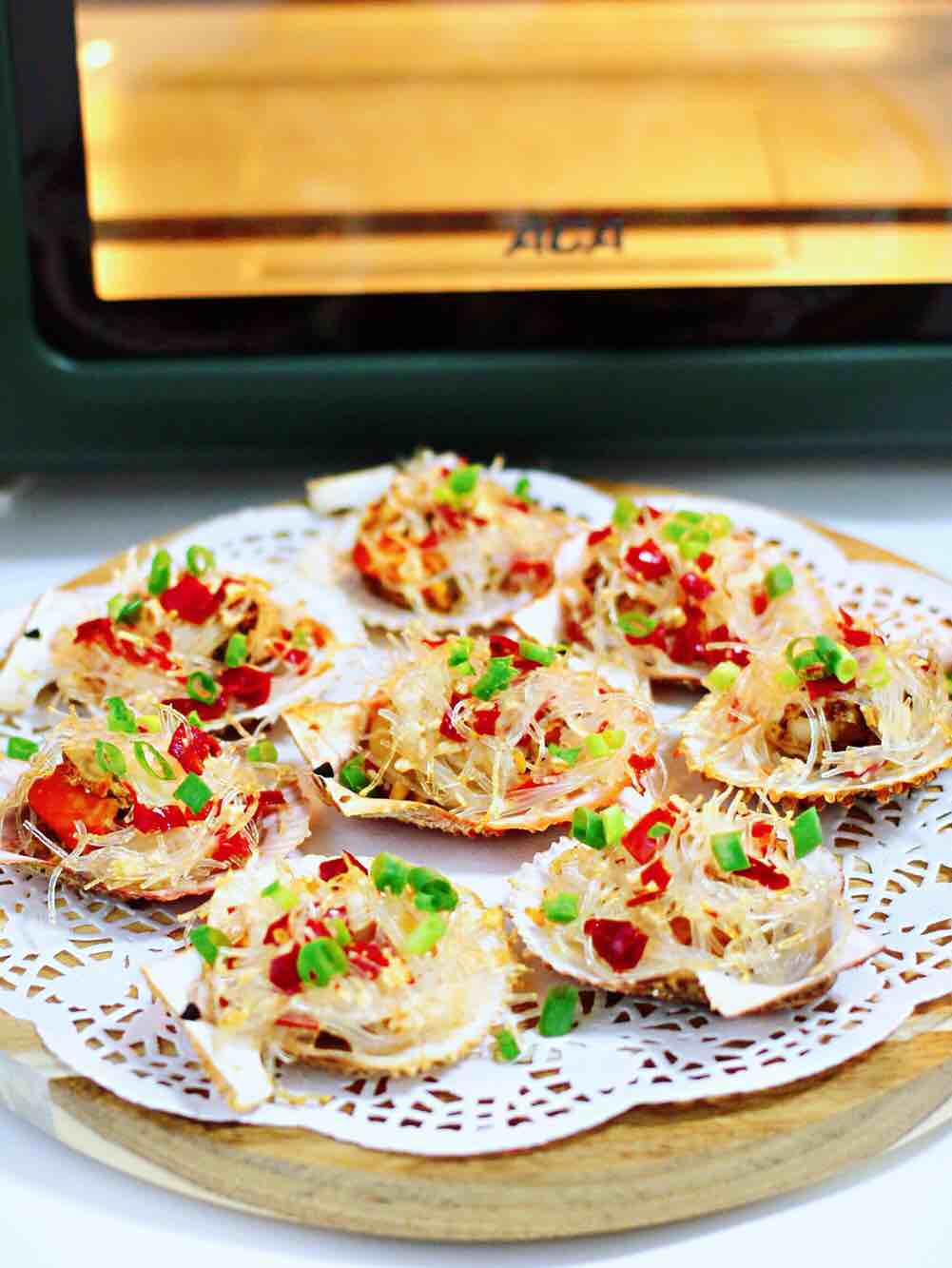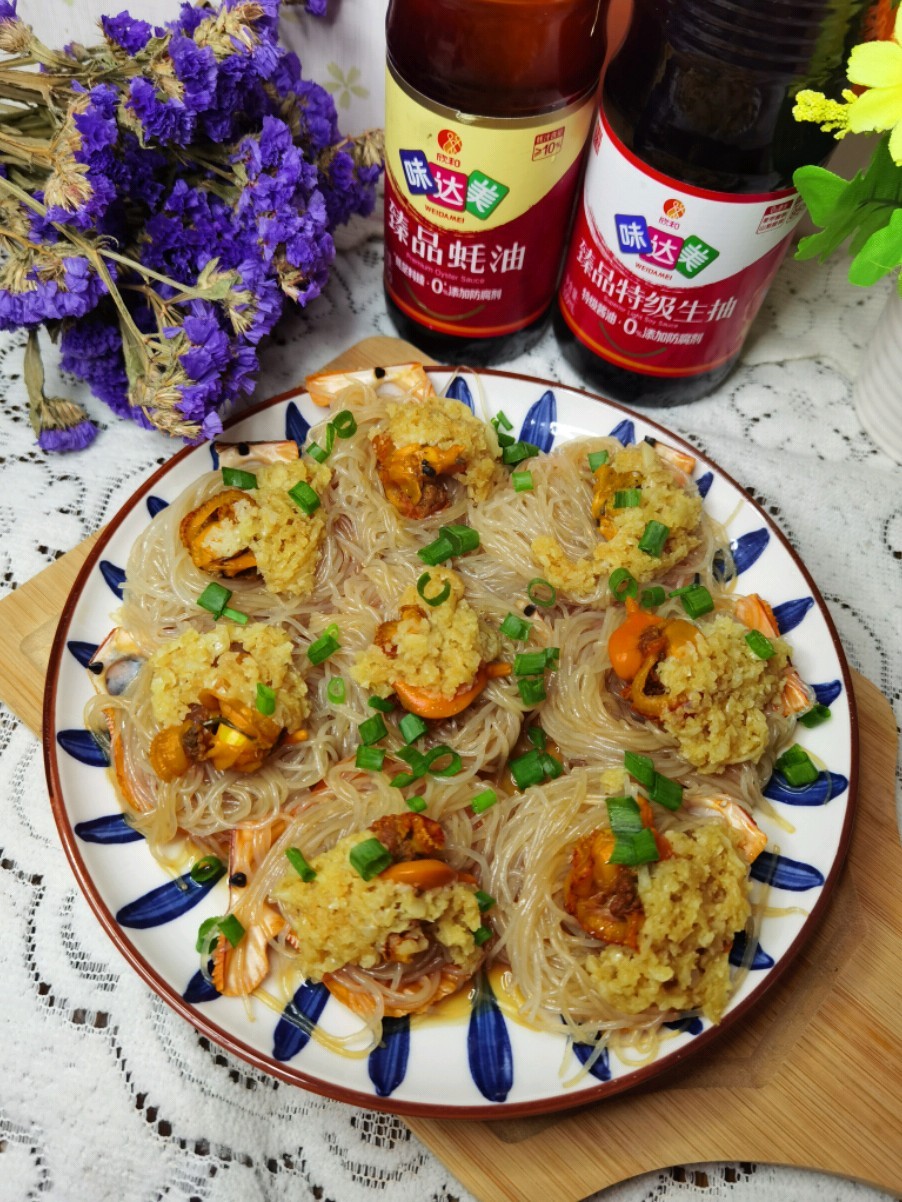Kansai-style Seafood Pancakes
1.
Cut fresh salmon into about 2 cm pieces, clean scallop meat and shrimp;
2.
Cut the cabbage into thin strips, and the leeks into inch pieces;
3.
Large group photo of ingredients: prepare whole-wheat bread flour, eggs, salt, and white pepper. Whole-wheat bread flour can also be replaced with whole-wheat flour, common wheat flour, and other coarse grains; dipping sauce is also prepared, see the following steps;
4.
Put whole wheat bread flour and eggs in a basin, add a small amount of cold water and mix with them; you can use kelp broth to make it more delicious; simple konbu broth preparation: take a piece of kelp (kelp), wash it and soak in cold water, now It can be stored in the refrigerator in hot weather, and the water will be the kelp broth the next day;
5.
The amount of flour can be more or less, and it can be adjusted according to the number of consumers, and it can also be adjusted according to the taste you like; if the amount of flour is more, the adhesion of the pancake will be stronger, and the amount of staple food obtained will be more, and it will be thickened. Just make it mushy; put it aside for a few minutes;
6.
When making the batter, pour a little olive oil in a frying pan, fry the salmon until the surface changes color, let it cool and set aside; then add the shredded cabbage and leeks into the batter and mix together. The amount of vegetables is not fixed, so I like to eat more. Put more dishes, but consider the ratio of batter to prevent pancakes from being formed into blocks due to more dishes and less sides; there is a layer of batter clearly visible on all dishes, this ratio is appropriate;
7.
Add the salmon cubes, scallops, shrimps, a little salt, and white pepper to the vegetable batter bowl and stir evenly. At this time, all the vegetable ingredients are covered with a thin layer of batter. If you can’t see it Batter, indicating that the amount of flour is too small, either add a little more flour and mix it together, or you need to add an extra egg for binding;
8.
Pour an appropriate amount of high temperature resistant olive oil into the frying pan where the salmon was previously fried, pour the ingredients into the pan, spread them evenly with a spatula, press lightly to make the ingredients firmer, and heat it over medium heat. , After hearing a slight buzzing sound at the bottom, turn to low heat without covering the lid; a few minutes from the back end of the pan, shake the pan a few times, the edge of the cake will be strong and will not shake left or right, you can turn it over and fry;
9.
The dipping material can be made according to the taste: the bonito soy sauce, mirin, and shichimi powder used in the original recipe, I don’t have all of these, I replaced it with the more common light soy sauce, and squeezed a fresh lemon juice to dilute it. The concentration of light soy sauce is increased, and the refreshing sourness is increased. The fried white sesame seeds further increase the fragrance and nutrition;
10.
When the pancakes are fried on both sides, they can be cut into pieces, triangle pieces or cubes.
11.
Kansai-style seafood pancakes are nutritious, tender and delicious!

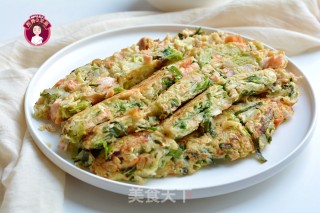
Tips:
1. The Kansai-style seafood pancakes are light and not greasy. The staple food is integrated with the dish. There is no additional seasoning but it is very tender. The sauce will have different flavors or not; there is no fixed ratio and combination of materials, and the ingredients are readily available throughout the year. All edible
2. Fry with high-temperature-resistant olives until it can soften the cardiovascular and cerebrovascular and promote brain development; if there is no olive oil, you can use other high-quality high-temperature-resistant vegetable oils instead;
3. Turn the whole cake over. If you can flip the spoon, it’s not a problem; if you can’t flip the spoon, you can prepare a large flat-bottomed plate, move the pancake to the plate, and then put the pan upside down on the plate and the cake, holding it in one hand. The pan handle is holding the bottom of the pan with one hand, and the pancake is buckled in the pan, so that the original surface becomes the bottom surface, and the pancake is kept intact.

